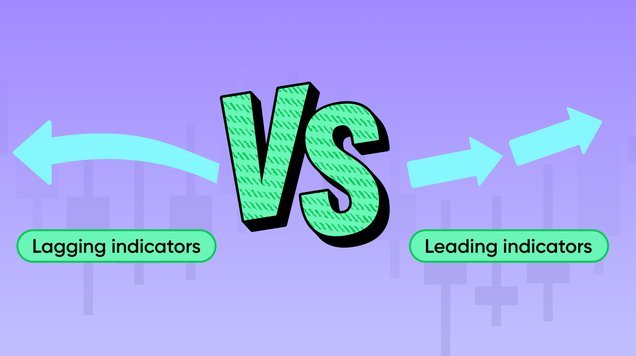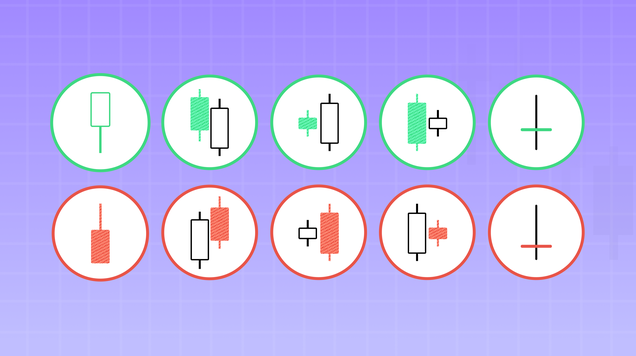Fundamental Analysis 101
Learn the principles of fundamental analysis and how you can use it to predict the price movements of financial products.

The real value of an asset doesn’t always reflect the price you see on the markets, as it could be under-priced or overvalued
Fundamental analysis looks at financial data and economic factors to identify an asset’s fair value and predict future price changes
Using both quantitative and qualitative data allows fundamental analysts to get a complete picture of the company and its value
Financial statements of companies and news are the main sources of information for fundamental analysts
Fundamental analysis and intrinsic value
Fundamental analysis focuses on identifying the intrinsic value of a stock or other asset, regardless of its market price. Intrinsic value can also be called fair market value.
The idea behind fundamental analysis is that an asset’s market price might not reflect the value of the company compared to the company’s public financial data. In other words, an asset might be cheap, but the company issuing the asset is highly valued and consistently performs well – or vice versa.
What does this look like in real life? Imagine that a company’s stock was trading at a value of $30 per share. After carrying out fundamental analysis, an investor determines that its price should actually be $34. Another investor does the same analysis but decides that it should be worth $36. Most investors would look at the average of these estimates and agree that the stock's intrinsic value is around $35. However, financial markets have far more influencing factors than three investors deciding on an asset’s value, so it can be a little more complicated than that.
In reality, working out an asset’s intrinsic value means using fundamental analysis to examine all the factors that can affect its price. This means looking at macroeconomic factors like the state of the economy, and microeconomic factors like the financial health of the company issuing the asset.
By focusing on a particular company, an investor can work out the intrinsic value of a company and find opportunities to buy assets at a discount or sell at a premium, assuming that in the long run the stock price will reflect the analysts’ valuation.
If an asset’s intrinsic value is higher than its current market price, it may be recommended to buy that asset because it is undervalued with a potential price rise to come. If the intrinsic value is lower than its current market price, the asset is thought to be overvalued, and the recommendation is usually to avoid buying the asset or to sell it if it’s being held.
Determining intrinsic value is mostly used for stocks but it’s useful for other assets too. For example, investors looking at the price of a commodity like wheat will look for things that will affect the quality of its crops. Anything that slows crop production, like adverse weather, will probably lead to higher prices.
Analysis of macroeconomic and microeconomic factors
Fundamental analysis involves analysing both macroeconomic and microeconomic factors to identify assets that are undervalued or overvalued in the market.
Macroeconomic factors include broad economic factors, such as GDP growth, inflation, interest rates, government policies and geopolitical events that can affect the economy.
Microeconomic factors focus on the specific company, the industry it is in and its position in the market. This includes factors like revenue, earnings, profit margins, market share and the quality of its upper management.
Fundamental analysis can be either top-down or bottom-up.
Top-down approach starts by analysing the overall health of the economy. This is the starting point to find the best potential companies to invest in or trade on, not to analyse a specific company they already have in mind.
By analysing the various macroeconomic factors like interest rates, inflation and GDP levels, this approach tries to determine the overall direction of the economy and identify the most promising industries and sectors. The analyst will then assess potential opportunities within the identified industries or sectors before selecting and analysing individual stocks from them.
Alternatively, there’s the bottom-up approach. The idea is that individual stocks may perform better than the overall industry. So instead of starting the analysis from the economy, the bottom-up approach starts with analysing individual stock.
The bottom-up approach focusses on microeconomic factors such as a company’s earnings and financial metrics. Analysts who use this approach build a thorough assessment of each company to gain a better understanding of its operations.
Quantitative and qualitative fundamental analysis
Fundamental analysis can cover anything related to the state of a company. Things like revenue and profit are often reviewed, but things like a company's market share and the quality of its management can also provide useful insights.
This data can be divided into two categories: quantitative and qualitative.
- Quantitative information is about numbers, such as how much money a company is making, how many customers it has or how much its products cost. It's easy to compare these numbers and make decisions based on them.
- Qualitative information is harder to measure because it assesses things like how good a company's products are, how well a company is run or what people think of it. It's not always as easy to compare these things, but they can be just as important in making informed decisions.
Neither qualitative nor quantitative analysis is inherently better than the other and it’s important to look at both the numbers and other information to get a complete picture. Therefore, fundamental analysis often combines quantitative and qualitative fundamentals.
Three quantitative fundamentals
- Balance Sheet: A company's assets, liabilities and equity at a given time
- Income Statement: A company's revenues, expenses and profits over a specific period
- Statement of Cash Flows: A company's cash inflows and outflows over a period of time
Four qualitative fundamentals
- Business Model: An understanding exactly what the company does and how it makes money
- Competitive Advantage: A company's ability to maintain an advantage over its competitors, allowing it to continue to grow and be profitable
- Management Quality: An evaluation of the skills of a company's upper management including their backgrounds and track records
- Corporate Governance: Examining how a company is run and whether it’s ethical, fair, transparent and efficient
Where to find financial data for fundamental analysis?
Access to reliable financial data is necessary for conducting fundamental analysis. There are several ways to find public data on companies.
It's important to remember that financial data can be complex and may need some understanding of accounting and finance to understand it. It's always a good idea to consult a financial professional if you're unsure about how to analyse a company's financial data.
Company’s website
Many public companies publish their financial statements on their website. This information can be usually found in the ‘investor relations’ section.
SEC Filings
Publicly-traded companies are required to file their financial statements with the Securities and Exchange Commission (SEC). These filings are available on the SEC's EDGAR database.
Financial news
Websites like Yahoo Finance, Google Finance, CNBC Business News and Bloomberg will all likely provide financial data and news about publicly listed companies.
Annual Reports
Most public companies publish an annual report that includes financial information and analysis of the company's performance. In the United States, financial statements such as quarterly and annual reports and filings like the 10-Q (quarterly) or 10-K (annual).
Difference between fundamental analysis and technical analysis
Technical analysis and fundamental analysis are two different ways of predicting the future price of a trading product.
Fundamental analysts believe the best way to find the fair value of an asset is examining its business’s financial reports, its position in the market, its competition and wider economic factors.
Technical analysis looks purely at market data, such as historical prices and trading volume. Technical analysts believe that looking at previous price movements and identifying market trends are better indicators for predicting future price changes than the information used by fundamental analysts.
Despite the differences, both methods are important to understand if you want to succeed in online trading. Traders don’t have to choose between the two methods of analysis but can combine both to get a more complete view of the market and prices.









